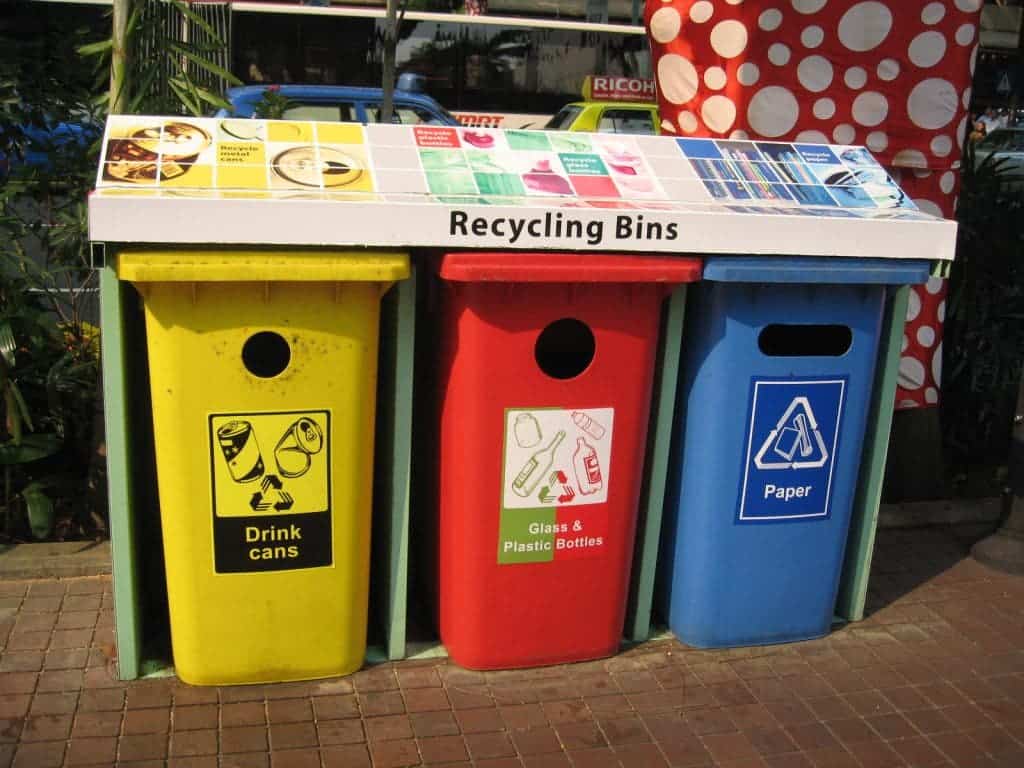
For some, it might seem like recycling popped out of the blue in the 1970’s, once with introduction of the Earth Day concept or the creation of the Environmental Protection Agency. That’s only when awareness finally grew and it became a popular subject, though. Recycling under one form of the other can be traced back to ancient times, and fairly enough it was actually common practice before the Industrial Revolution kicked the world into a new gear.
It was very common for people to smelt old swords of metals, re-use old boots, patch-up worn clothes. A lot of people would actually hold on to essential things, like clothing, silverware or tools all their lifetimes. In an age of scarceness, where almost all commodities had to be made in toiling manual labor, people would have had a much greater respect for frugality of goods. Unfortunately, this predisposition to hang on to things and not be wasteful is more of an economic consequence, rather than an active-seeking life philosophy dictated by conscience. Come the mid and late 1800’s, people’s priorities shifted dramatically as now a myriad of mass-produced goods were flooding the market. Why bother repurposing or recycling, when it’s so much easier and cheaper even to buy a new one.
Around this time, every big city in the United States started using landfills to get rid of their waste – but little did they know how massive these would have come to grow. In the 1930s and 40s, conservation and recycling made a comeback by becoming important again in American society and in many other parts of the worlds. Of course, scarcity following two world worlds and the Great Depression had been the primary factors, but now recycling was inclined to stay. Many television campaigns started around this time, although not with the same boost and ethos like in the 1970s. It became practically a patriotic duty to recycle, and it all went fairly well for some time.
We’re getting ahead of ourselves a bit, though, since it wouldn’t be fair not to mention a few words about some of the first recycling operations in the U.S. The roots of recycling in the U.S. can be traced back all the way to the 1600s and it started with the recovery of paper. The Rittenhouse Mill in Philadelphia turned recycled rags into paper as far back as 1690, making it the oldest-known recycling center in the United States. Again, driven by scarcity and high demand, other cities soon joined and built their own mills. There are many accounts that tell of so called peddlers or pickers – people who would walk down New York City’s streets with a cart or horse-drawn wagon calling out, “Do you have any rags? Do you have any bottles? Do you have any paper?” Despite the peddlers’ best efforts to collect used paper, the city of New York and many like it were littered with garbage everywhere.
It was Colonel George E. Waring Jr., a sanitation engineer and Civil War veteran, that finally put things in order in NYC. After being named as the commissioner of what was to become today’s New York City’s Sanitation Department, the old colonel launched a massive sweeping campaign and introduced a working collection strategy. Thoughtful, the colonel also included recycling in his plans and around the same time a sorting facility in Manhattan served as the city’s first recycling plant.
Today, U.S. residents recycle some 74 percent of their paper – a whooping figure compared to other parts of the world, despite plastics are trailing way far behind with only 3 percent of plastics used by Americans getting recycled. Still, more paper could be recycled and there are ample reasons to be extra careful with it. Being organic, paper decomposes into methane – a greenhouse gas that’s 21 times more potent than carbon dioxide meaning it can trap 21 times more heat. In 2006 alone, the amount of greenhouse gases that came from the decomposing of waste paper was equivalent to those emitted by 8.3 million passenger cars.
In the past two decades, the trend among the general population has returned to wastefulness. As practically any consumer good is mass produced today, people are inclined to throw away their stuff after they’ve lost their purpose. It’s clear economic incentives aren’t enough – it’s absurd to hope people become poor enough that they’d want to recycle, so that there would be a difference made. Instead, battling ignorance and laziness by facing people with the potential consequences of their action might play a major role. Remember, do your own part, as best as you can.






